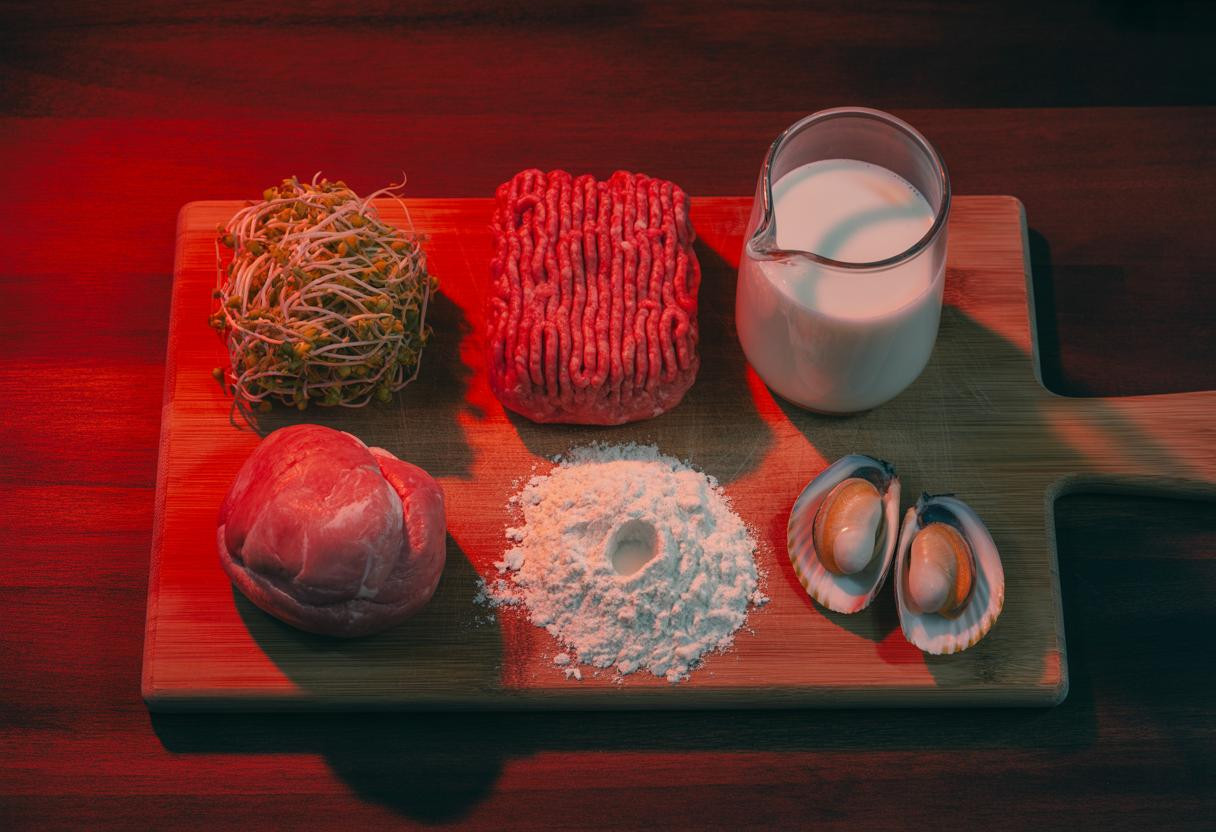Every year, thousands of Americans end up hospitalized because they consumed foods that seemed perfectly safe when raw. What many don’t realize is that some of our most common kitchen staples transform into silent health threats when eaten uncooked, harboring dangerous bacteria that can cause severe illness or even death.
Recent data shows a 41% increase in food-related recalls from 2023 to 2024, with 1,392 reported cases of foodborne illness resulting in 487 hospitalizations and 19 deaths. This alarming trend highlights how certain raw foods pose risks that most people never consider until it’s too late.
The five deadliest raw foods hiding in your kitchen
Food safety experts have identified specific foods that consistently cause the most severe outbreaks when consumed raw. These aren’t exotic ingredients – they’re everyday items that millions of Americans handle regularly without understanding the hidden dangers lurking within.
Raw sprouts: The perfect bacterial breeding ground
Sprouts top the danger list because their growing conditions create an ideal environment for harmful bacteria. The warm, humid conditions needed for germination allow E. coli and Salmonella to multiply rapidly throughout the sprout structure.
Between 2021 and 2025, sprouts have been linked to frequent recalls due to bacterial contamination. Unlike other vegetables that can be thoroughly washed, sprouts absorb bacteria during the growing process, making surface cleaning ineffective. Even organic sprouts carry this risk, as contamination often occurs at the seed level.
Unpasteurized dairy: 150 times more dangerous
Raw milk and unpasteurized dairy products carry a 150 times higher likelihood of causing foodborne illness compared to pasteurized alternatives. From 2013 to 2018, these products caused 75 documented outbreaks resulting in 675 illnesses.
The pathogens found in raw dairy – including Listeria monocytogenes, E. coli O157:H7, and Campylobacter – can cause severe complications, particularly in pregnant women and immunocompromised individuals. Recent cases have shown how organic products aren’t immune to contamination, making pasteurization a critical safety step.
Ground meat and raw shellfish dangers
Ground meat spreads surface bacteria throughout the entire product during processing, requiring internal temperatures of 160°F for beef and pork, 165°F for poultry. Raw shellfish from coastal waters can harbor Vibrio vulnificus and norovirus, with no cooking step available for traditional raw consumption.
Uncooked flour rounds out the top five, contaminated during farming or milling processes. Recent recalls have linked raw cookie dough consumption to serious Salmonella infections, particularly affecting children who are more likely to consume raw batter.
Understanding the science behind food safety risks
The reason these foods become dangerous isn’t always obvious. Many people assume that visible cleanliness equals safety, but harmful bacteria are microscopic and often odorless. Unlike spoilage bacteria that create obvious signs of decay, pathogenic bacteria can multiply without changing a food’s appearance, smell, or taste.
Climate change has also intensified these risks. Warmer temperatures during transportation and storage create more opportunities for bacterial growth, while extreme weather events can contaminate water sources used in food production.
Protecting yourself with proven safety strategies
The most effective protection comes from understanding proper cooking temperatures and handling techniques. Use a food thermometer to verify internal temperatures, as color changes alone don’t guarantee safety.
Essential temperature guidelines
Cook ground meats to 160°F, whole poultry to 165°F, and avoid consuming any unpasteurized dairy products. For shellfish, cook until shells open and flesh becomes opaque. Never taste raw flour or dough containing raw eggs.
Cross-contamination prevention requires separate cutting boards for raw meats and other foods, along with thorough hand washing between handling different ingredients. This simple step prevents the spread of pathogens throughout your kitchen.
Smart shopping and storage
Choose pasteurized dairy products and avoid raw sprouts entirely if you’re in a high-risk group. Store raw meats on the bottom refrigerator shelf and maintain temperatures below 40°F. Just as we’ve learned about hidden risks in common household appliances, food safety requires ongoing vigilance about seemingly safe practices.
The bigger picture of food safety awareness
These raw food risks represent just one aspect of kitchen safety that deserves attention. By understanding which foods require cooking and following proper handling procedures, you can dramatically reduce your risk of foodborne illness while still enjoying a diverse, nutritious diet. The key lies in making informed choices based on scientific evidence rather than assumptions about food safety.
